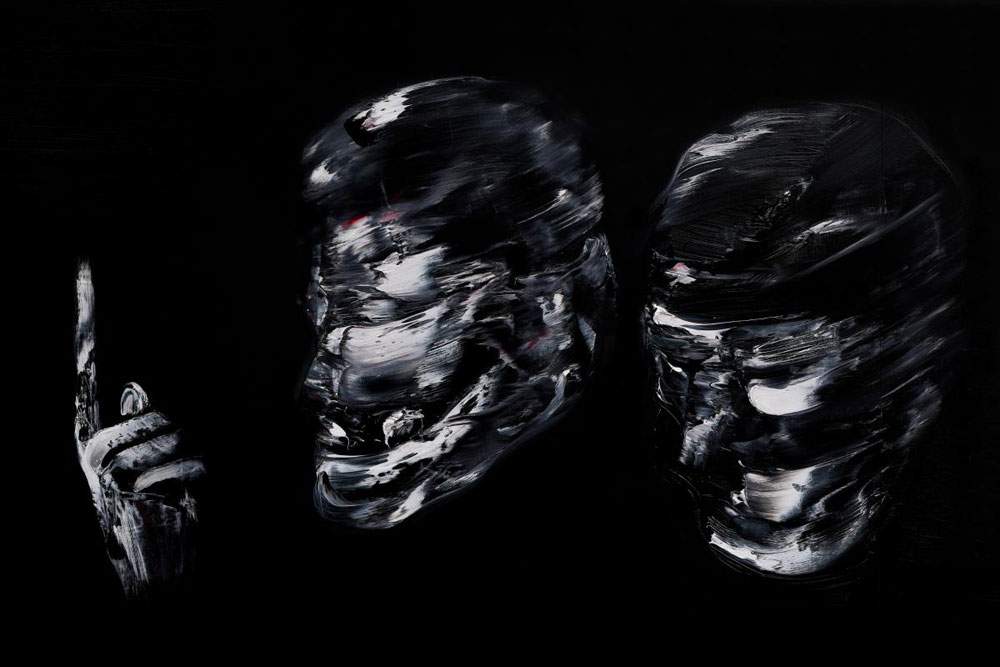The Great Sacrifice: Lorenzo Puglisi's tribute to Leonardo in Santa Maria delle Grazie
In the Bramante Sacristy in Santa Maria delle Grazie, Milan, Lorenzo Puglisi (Biella, 1971) pays tribute to Leonardo da Vinci, on the 500th anniversary of his death, with a monumental and unpublished work entitled The Great Sacrifice.
The painting created by the artist on poplar paneling will be on public view from April 3 to 28, 2019, a short distance from Leonardo’sLast Supper, and is his largest work: six meters long and two meters high, in which the heads and hands of Christ and the apostles emerge white from the black background. A bichromy that restricts the work to its minimal and deep elements.
For the past seven years, Puglisi has dedicated a cycle of works to Vinciano’s masterpiece, placing himself in dialogue with the great artists of the past.
Curator Giovanni Gazzaneo explained, "The history of art Puglisi welcomes it in his work not through the perfection of formal completeness, but by offering us an open image, free to play in the polarities of black and white, in a dynamism that knows no end. Where black is not just horizon, much less frame: it is the very substance of the work. From the darkness emerges presence, a presence that is sustained by that darkness and in that darkness comes to life: glimmers of light, slivers of paint dense and quivering, as if in motion. Black invokes light and welcomes the generation of form. And in the generation of form we can grasp the meaning of Puglisi’s contemplation of the art of the past: the work is not dead, the work is alive, it is fruitful, and its splendor spans the centuries and continues to illuminate men and time. A splendor that becomes dazzling for an icon like Leonardo’sLast Supper. The apostles, portraits of real men caught in a whirlwind of emotions and thoughts over the unexpected announcement of betrayal-which is accompanied by the greatest miracle, Christ’s offering of love and life in the consecration of bread and wine-in Puglisi’s vision they become faces and hands of light, almost forming an ideal score or perhaps a constellation of stars."
Puglisi’s works are characterized by strong chromatic symbolism: in black he sees the power of color and the representation of the pre-existing condition of things; dense white brushstrokes define volumes, faces, hands, feet, inspired by the great masters, such as Leonardo, Caravaggio, Rembrandt and Goya. Puglisi illuminates only what he wants to highlight, fragments that emerge from the darkness to seek the light.
"In TheLast Supper Leonardo worked on what he was most interested in, which was the inner motion of the human being, the relationship between gestures, emotion and thought that we will later see also expressed in works such as The Mona Lisa and The Virgin of the Rocks. This is where my attempt to relate to the work of The Last Supper, which I believe represents a summation of all the masterpieces in the history of Western painting, begins. In 2016 I presented the first Great Sacrifice (one and a half by five meters) in Paris, which was followed by other small and large-format works on paper, canvas, board and other materials including metal, with the ambition and hope that with each new realization of the same subject my work will acquire greater intensity and energy," the artist declares.
Two other works in the exhibition are dedicated to the theme of the Passion of Christ: 2018’s Crucifixion and 2017’s In the Garden of Olives, works inspired by Velázquez, Rubens and Goya.
For info: www.fondazionecrocevia.it
Hours: Tuesday through Sunday from 3 to 7:30 p.m.
Free admission.
Image: Lorenzo Puglisi, The Great Sacrifice, detail (2019; oil on poplar panel, 205 x 605 cm)
 |
| The Great Sacrifice: Lorenzo Puglisi's tribute to Leonardo in Santa Maria delle Grazie |
Warning: the translation into English of the original Italian article was created using automatic tools. We undertake to review all articles, but we do not guarantee the total absence of inaccuracies in the translation due to the program. You can find the original by clicking on the ITA button. If you find any mistake,please contact us.




























